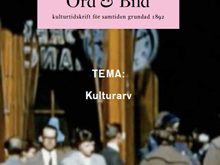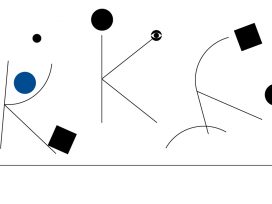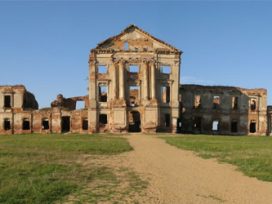Prelude
The more complicated matters become, the more things pile up and meanings get difficult to decipher, the more necessary it becomes to devise an itinerary of one’s own and select a grid that is completely personal. In a situation where certainty and clarity are lacking, where there is no opportunity to gain a detached view, it becomes essential to follow Ariadne’s thread guiding us like a red line through the wanderings of the labyrinth. But it has happened to me numerous times that on coming out in an exhausted state from one of the biennials or one of the documenta, I encounter an art critic, curator or journalist firing comments like a machine gun: “It’s weak this year… a festival of mediocrity… a heap of material without meaning and an absence of any curatorial idea or guidelines whatsoever…” or things like that.
My immediate reaction has always been: “Why don’t you change your job?” and “It’s time you learnt how to look”, or even “Get your brain involved and use it.” I’ve also thought that one could seek to develop some sort of measure for quantifying the combined efforts of all the artists in order to contradict this type of judgment which sounds more like prejudice and which often is not based on genuine experience from exploring in depth and trying to understand what is in front of them. You could, for instance, ask all the artists present how much time they had invested in the works on display, and for how many years they worked as artists prior to being invited to participate in the Biennale. The sum of hours/days/decades, or indeed centuries, could almost be a quantitative indicator, even if – admittedly – it is no longer a measure of quality.
It has taken some time to understand that this position of the critic is probably – more than inability – to some extent a kind of survival reflex. To review a show such as the Biennale in its totality, with its 83 artists (of which 32 are women and 32 under the age of 35), 89 pavilions and 37 collateral events is simply impossible. To pretend to be able to manage to do this is a form of megalomania. I think that the only way of getting out of this is to make precise selections based on themes, trends or reflections which may have been sparked off by particular aspects of the various curatorial concepts, rather than specific works or pavilions. Therefore when faced with the boundless variety I decided to investigate three themes: the problem of light, the notion of nation and the principle of interaction.
Light
The title of the exhibition curated by Bice Curriger, ILLUMInazioni, remains ambiguous even after a second glance: vague, undefined, and in certain aspects contradictory. You read of the important role that light has played in art since the very beginning, and in a heightened manner during the Renaissance and in the Baroque period. But not only: on one hand, the title alludes to the idea of the lamp of Enlightenment, that is the role of rationality in human knowledge, and on the other, to its opposite: light as a suggestion of divinity and mysticism. The Biennale opens, in fact, with three paintings by Tintoretto, artist experimenter par excellence, and who represents the transition from the Renaissance to the Baroque. In the works by the Venetian painter, light has an essential role and notwithstanding its minimal presence, creates the most powerful contrasts. Light becomes divine presence and by the grace of pure gold brings the invisible into the realm of the visible.
In confrontation with Tintoretto we find a contemporary position that pushes beyond in its radicalness: the works of Bruno Jakob, where the painterly gesture becomes completely invisible, given that it has been executed in water. Thus the visible passes into a sort of transcendence of the invisible, and other than the artist, no-one will ever know what has been depicted there. Not all of the artists of the Biennale have executed the games with light, the play of its presence or absence, quite so subtly. Amalia Pica, for example, reproduces the phenomenon of the cumulative mixing of colour, where two bands of complementary colours (here red and green) create white light where they intersect.
James Turrell, on the other hand, is definitely the undisputed master of “painting” with light in space. In his installation “Bridget’s Bardo – The Wolfsburg Project” from 2009/2010, on show at the Arsenale, a changing light which picks up the colours of the Tintoretto floods a room raised above the ground, to which one gains access by means of a stairway. The stupendous and stunning phenomenon is that the coloured rectangle on the wall appears as if it were a flat projection of light, however it is actually an opening which leads to an internal space coloured by light. This creates a strange form of spatial confusion, a potent ambiguity between bi- and tri-dimensionality which makes you lose practically all sense of orientation in space.
Contrary to Turrell, the neon pyramid of Mai-Thu Perret stays the way it is, even if it is reminiscent of the Swiss artist Emma Kunz who played at being Demiurge (the “artisan” god in Aristotelian thought) by means of geometric forms. Despite the best of intentions, this blinding, freezing and purely technological light does not emanate any transcendental aura whatsoever. In “Spazio Numero 13” by Fischli-Weiss (2011), a full moon illuminates – indirectly by being the reflected light of the sun – archetypical forms of architectural constructions placed on white pedestals: clay tubes, corners and walls. The two Swiss artists are so faithful in their 360 degree inquiry into the man-made forms that, like fake readymades, these acquire the status of a work of art.
Naturally, light plays an important role in all the photographic works, like the marvellous shots by Luigi Ghirri (“Passaggi di cartone”, 1972) or the series depicting everyday life in Shanghai by the artists Birdhead (Song Tao and Ji Weiyu). In the work by Urs Fischer, the principle of illumination is instead transmuted into three gigantic candles: the chair in his studio, his friend Rudolf Stingel and “Il ratto delle Sabine”, a remake of a Baroque sculpture by Giambologna. It is impossible not to think of the memento mori and the vanitas of paintings of the seventeenth century, seeing that the three sculptures in the form of candles will have disappeared by the end of the Biennale and all that will remain will be a shapeless mountain of wax which has set hard again.
Cinema, which more than any other medium consists purely of light and without any fixed supporting structure, is capable of recreating a total illusion, surrounding us in a world of limitless fakery. It’s not by chance that the film “The Clock” by the American artist Christian Marcley won the Leone d’oro prize as the best contribution to the Biennale of 2011. His endless work, a 24-hour montage made up of tiny pieces quoted from various films in the history of cinema, all of which have in common that they speak of time or display a clock, is a stroke of genius. Only after some time you realise that the hour portrayed in the film corresponds to real time and hence creates a factor of real perceptive displacement: so much so that the viewer, and with them the reality of the present, begins to form part of the film. We find ourselves as if teletransported to bygone times; more than ever, the one who watches not only identifies with whoever is performing but enters completely into the representative space of the film.
 A magical atmosphere, conversely, is created in “Spazio elastico” by Gianni Colombo, a work of 1967, already shown in the Biennale of 1968. Fluorescent elastic cords, lit up by ultraviolet light, are strung out in a darkened room. Not one line remains fixed in the space, the coordinates of the three dimensional grid wobble and as a result spatial perception is severely disturbed. This conceptual work of the 1960s brings us directly to the contribution of Kristaps Gelzis, a conceptual artist born in 1962, in the Latvian Pavilion. Since 2007, he too has been conducting a very special investigation into the medium and the perception of painting. From one aspect his works make us think of the “colour field painting” of fellow countryman Mark Rothko, from another they link up with experiments with light and its effect on perception. The colour emanating from the paintings that almost completely cover the walls of the space is not the colour of the water painting, nor of its paper backing (both completely white). The colour that can be perceived comes from a phosphorescent ultraviolet light fired into space, which has the capacity of falsifying the appearance of everything that it finds there. The viewers and their outlines become part of the painting and interact with the pictorial space. The paintings of Gelzis manage to be all-encompassing and envelop the viewer in light, like a spider entraps the fly with its filaments. Victim of the deceptive effect of UV rays, the viewer remains locked inside the painting, and in the end participates in the work. The question of the truth or falsity of things, the problem of delusion of perception or, as Descartes said, whether there exists a wicked little devil who misleads our senses, once again remains open. And perhaps it’s better that way. I prefer questions to answers, interrogation to affirmation.
A magical atmosphere, conversely, is created in “Spazio elastico” by Gianni Colombo, a work of 1967, already shown in the Biennale of 1968. Fluorescent elastic cords, lit up by ultraviolet light, are strung out in a darkened room. Not one line remains fixed in the space, the coordinates of the three dimensional grid wobble and as a result spatial perception is severely disturbed. This conceptual work of the 1960s brings us directly to the contribution of Kristaps Gelzis, a conceptual artist born in 1962, in the Latvian Pavilion. Since 2007, he too has been conducting a very special investigation into the medium and the perception of painting. From one aspect his works make us think of the “colour field painting” of fellow countryman Mark Rothko, from another they link up with experiments with light and its effect on perception. The colour emanating from the paintings that almost completely cover the walls of the space is not the colour of the water painting, nor of its paper backing (both completely white). The colour that can be perceived comes from a phosphorescent ultraviolet light fired into space, which has the capacity of falsifying the appearance of everything that it finds there. The viewers and their outlines become part of the painting and interact with the pictorial space. The paintings of Gelzis manage to be all-encompassing and envelop the viewer in light, like a spider entraps the fly with its filaments. Victim of the deceptive effect of UV rays, the viewer remains locked inside the painting, and in the end participates in the work. The question of the truth or falsity of things, the problem of delusion of perception or, as Descartes said, whether there exists a wicked little devil who misleads our senses, once again remains open. And perhaps it’s better that way. I prefer questions to answers, interrogation to affirmation.
Nation
The false suffix to ILLUMInazioni leads us to confront another subject: Bice Curriger chose to “problematise” the theme of “nation” (a term already problematic in itself) by means of five questions that she posed to all the artists present, in the principal exhibition as well as in the pavilions. I noticed that the majority maintained that the artistic community is not a nation. And as regards the question of how many nations they had within themselves there were two main responses: “many” or “none”. Answers to the question: “Where do you feel at home?” were obviously very varied: “Where my children are”, “in the Antarctic”, “by the sea”, “wherever”, “in a warm place”, “in the writings of Robert Walser”, “where there is a sense of relief” etc., but leafing through them I did not find a single person who specified their own country as their nation.
Even if the questions may seem a little banal (as someone noted), the responses on the other hand were significant and express a growing phenomenon which has become increasingly evident over the last few years. The notion of nation is losing importance in a “glocal” world, in which both the local and the global seem to take precedence over the national. Years ago, Italian critics collected signatures in favour of reinstating an Italian Pavilion at the Biennale (and, as we know, they succeeded), but I know of quite a few Italian artists who refused to sign saying that the national pavilions should all be abolished.
In recent years you could see, for instance, “foreign” artists representing a country: for example, in 2005 Gianni Motti, an Italian artist who lives in Geneva, represented Switzerland. In its current form, the multicultural aspect is often evident in the creation of collaborations between artists from various backgrounds. In the main exhibition, curator Bice Curriger has created the so-called “parapavilions”, in which four artists were requested to come up with architectonic structures which, in turn, would host other artists. In this way Song Dong opened a remake of the Peking house he was born in to artists Asier Mendizabal, Cyprien Gaillard and Yto Barrada. Monika Sosnowska constructed confined spaces in the shape of a star in which you could admire the (extremely political) photographs of South African David Goldblatt and a sound installation by the young Londoner Haroon Mirza. Hidden behind the title “Extroversion” was an intervention by Franz West, who brought the kitchen of his house in Vienna to the Biennale, turned it inside out and installed the original wallpaper and works by artist friends that usually hang there. This intervention was the catalyst for the Austrian artist being awarded the Leone d’Oro for lifetime achievement.
The card of interactions between artists and persons of diverse origin this year is played also in various national pavilions. For her project “L’inadeguato”, the Spanish artist Dora Garcia invited predominantly Italian artists and critics to take part in readings, to conduct workshops or to organise debates on the subject of marginalisation, in a programme which is to remain for the duration of the Biennale. The events at the Spanish Pavilion, branded by Pier Paolo Coro as “the Italian Pavilion in exile” (see the accompanying interviews), may remind someone of the non-stop interactive activities of the “Progetto Oreste” at the Biennale of Harald Szeemann in 1999. The Danish Pavilion, too, was open to international participation. In the exhibition “Speech Matters”, 18 artists from 10 different countries examine the state of the art of freedom of speech and the press in the world: a well-made show which transcends the notion of country by considering themes which could seem taken for granted, but are instead shown to be of relevance for the whole planet.
If the two pavilions already mentioned stand out with intelligent moves and manage to stay clear of ideological, illustrative or propagandistic positions, Thomas Hirschhorn in the Swiss Pavilion is occasionally in danger of giving a message that is a bit too direct. Even if the sculptural language of the artist, who is resident in Paris, has advanced and greatly broadened over recent years, it occasionally falls into the trap of illustration. It is not enough these days to leaf through magazines and to see images of human brutality on the screen or in photos to feel less emotionally distanced to these shocking facts: by now we are almost too used to these types of “scandalous” images which we receive in a continuous flow from the press, and in consequence we tend to be hardened and desensitized towards them.
The political work which succeeds in being possibly the most moving, because it has something of the brutal truth in it, is to be found in the Egyptian Pavilion: “30 Days of Running in the Space”, a project by artist Ahmed Basiuny in which we see, other than his virtual trajectory in an empty space, film footage of his last two days of life in Tahrir Square in Cairo. This document makes us participants in the revolutions of 2011 which finally managed to overthrow the old dictatorial regime of Hosni Mubarak. The images of the popular rebellion are startling, especially when you discover that the artist, 33 years of age, paid with his life. The eventful film segments speak to us of a world in the midst of change, freeing itself from chains and leaving behind it new martyrs and creating new prophets.
The Estonian Pavilion was home to a political work of a completely different kind, but poses the same questions regarding the representation of social and political facts. Liina Siib takes as her starting point the phrase A woman takes little space, found in a literary article in an Estonian magazine. Through a series of photographs and video installations, the Baltic artist explores – not without a sense of humour – whether women really take up little space. We see women in their (restricted) place of work, a video of a mother at home, pictures of prostitutes who have been interviewed about their relationship with their own body, and finally there is a reportage of two pastry-cooks from Tallinn. Notwithstanding the precise research of materials and the great idea of presenting private and intimate aspects of the feminine world through mutations of the exposition space in a (fake) apartment, there is no denying a superficial and demonstrative aspect to this approach. It may be that it deals with a range of issues that have already been reviewed and indulged in but not only that: The works don’t manage to hide their formal weaknesses; the videos seem to have been filmed amateurishly; and the photographs are all frontal shots, making one think of a family photo album.
Interaction
Interactive art, a strong contemporary trend which creates connections between the agents and puts into action multidirectional reflections by means of exchange, moves further away from the idea of art as an object or a physical item. The branch of art goes beyond mere collaboration between artists who invite one another to do so (as in the parapavilions of Bice Curriger). It creates a dynamic system of unforeseeable situations in continual transformation and turns into a game with precise rules for which the development or the outcome cannot be predicted.
An example of this is the intervention “Who is afraid of free expression” by Norma Jean in the principal pavilion of the exhibition ILLUMInazioni. By means of an interactive installation, the artist presents a direct translation of the events from Tahrir Square in Cairo. The public is invited to express themselves personally, by creating forms, writing and drawing on walls using plasticine provided at the centre of the space in the form of a tricolour red, white and black cube, the colours being those of the Egyptian flag. In this way the artist, in a light and playful manner, has succeeded in recreating an integral aspect of this year’s revolutions: the populace (here the viewers) who unexpectedly take matters into their own hands and unleash a creative energy which previously was oppressed and invisible.
The Lithuanian Pavilion was also given a special mention from the Venice Biennale jury for “its conceptually elegant, and productively ambiguous framing of a nation’s art history” and created an intelligent game on the interaction between the works by various artists and the public. In the project “Behind the White Curtain” by artist Darius Miksys, the public is invited to play at being curator. From a white catalogue the visitors choose from among 173 works by artists who have been recipients of Lithuanian state grants over the last 20 years. Assistants with white gloves then fetch the chosen works from a depository behind the marquee and place them in the exhibition space, where they stay until the next visitor gives instructions to remove them.
In this way Miksys underlines the relative and transient aspect of culture and at the same time brings into focus the role of state curators who decide what art is worthy of enjoying support and what is not. With this device, the Lithuanian artist offers the latest version of the Duchamp readymade, in a game where each of our moves makes us co-responsible and puts to the test our certainties of “… what is a (valid) work of art and what is not”.
The 2011 Biennale has succeeded in making us reflect and consider fundamental questions about belonging, about interaction, about what is right, about criteria of evaluation and decision-making power. Thus, all in all, each visitor will be free to express him- or herself and to decide what to bring home and what to relinquish to the city on the lagoon.

 A magical atmosphere, conversely, is created in “Spazio elastico” by Gianni Colombo, a work of 1967, already shown in the Biennale of 1968. Fluorescent elastic cords, lit up by ultraviolet light, are strung out in a darkened room. Not one line remains fixed in the space, the coordinates of the three dimensional grid wobble and as a result spatial perception is severely disturbed. This conceptual work of the 1960s brings us directly to the contribution of Kristaps Gelzis, a conceptual artist born in 1962, in the Latvian Pavilion. Since 2007, he too has been conducting a very special investigation into the medium and the perception of painting. From one aspect his works make us think of the “colour field painting” of fellow countryman Mark Rothko, from another they link up with experiments with light and its effect on perception. The colour emanating from the paintings that almost completely cover the walls of the space is not the colour of the water painting, nor of its paper backing (both completely white). The colour that can be perceived comes from a phosphorescent ultraviolet light fired into space, which has the capacity of falsifying the appearance of everything that it finds there. The viewers and their outlines become part of the painting and interact with the pictorial space. The paintings of Gelzis manage to be all-encompassing and envelop the viewer in light, like a spider entraps the fly with its filaments. Victim of the deceptive effect of UV rays, the viewer remains locked inside the painting, and in the end participates in the work. The question of the truth or falsity of things, the problem of delusion of perception or, as Descartes said, whether there exists a wicked little devil who misleads our senses, once again remains open. And perhaps it’s better that way. I prefer questions to answers, interrogation to affirmation.
A magical atmosphere, conversely, is created in “Spazio elastico” by Gianni Colombo, a work of 1967, already shown in the Biennale of 1968. Fluorescent elastic cords, lit up by ultraviolet light, are strung out in a darkened room. Not one line remains fixed in the space, the coordinates of the three dimensional grid wobble and as a result spatial perception is severely disturbed. This conceptual work of the 1960s brings us directly to the contribution of Kristaps Gelzis, a conceptual artist born in 1962, in the Latvian Pavilion. Since 2007, he too has been conducting a very special investigation into the medium and the perception of painting. From one aspect his works make us think of the “colour field painting” of fellow countryman Mark Rothko, from another they link up with experiments with light and its effect on perception. The colour emanating from the paintings that almost completely cover the walls of the space is not the colour of the water painting, nor of its paper backing (both completely white). The colour that can be perceived comes from a phosphorescent ultraviolet light fired into space, which has the capacity of falsifying the appearance of everything that it finds there. The viewers and their outlines become part of the painting and interact with the pictorial space. The paintings of Gelzis manage to be all-encompassing and envelop the viewer in light, like a spider entraps the fly with its filaments. Victim of the deceptive effect of UV rays, the viewer remains locked inside the painting, and in the end participates in the work. The question of the truth or falsity of things, the problem of delusion of perception or, as Descartes said, whether there exists a wicked little devil who misleads our senses, once again remains open. And perhaps it’s better that way. I prefer questions to answers, interrogation to affirmation.




